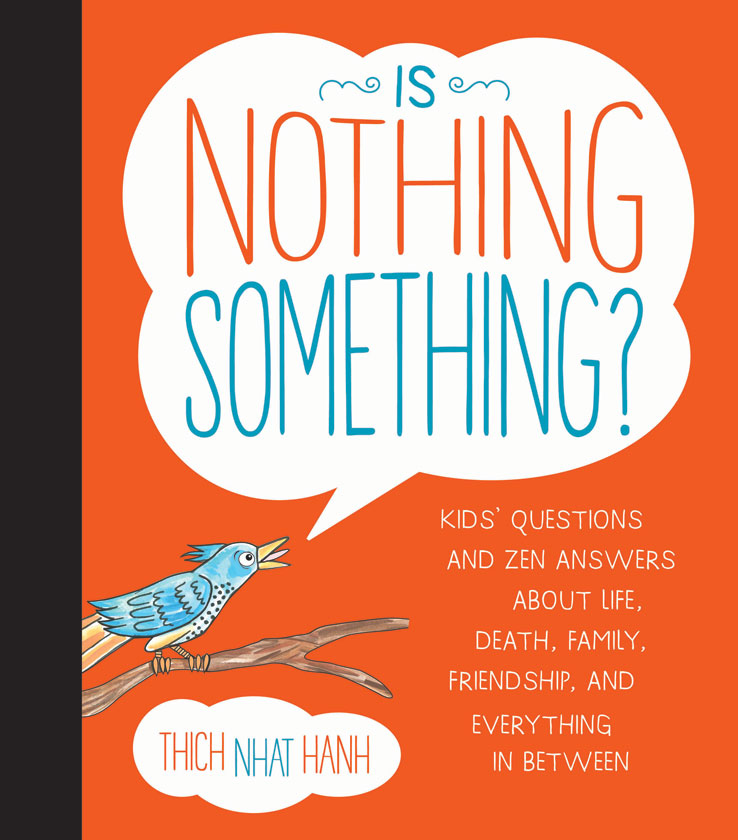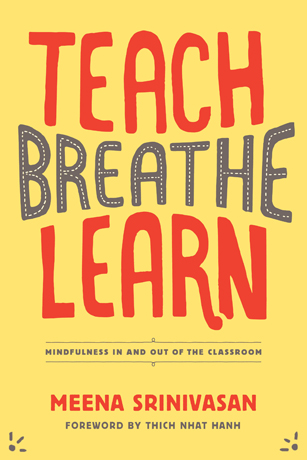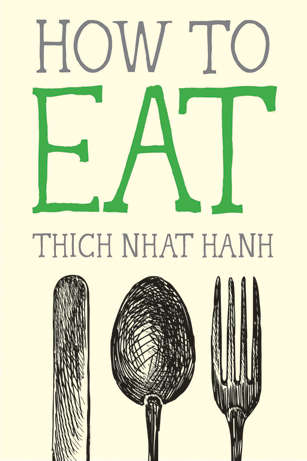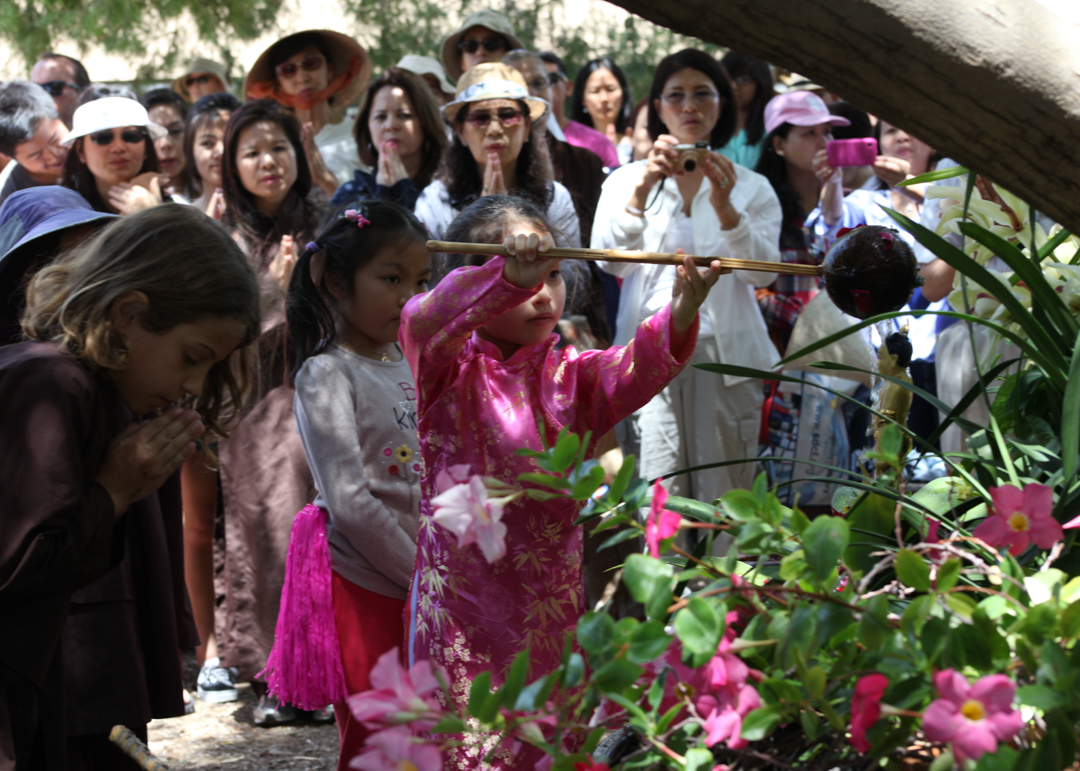
Is Nothing Something?
Kid’s Questions and Zen Answers About Life, Death, Family, Friendship, and Everything in Between
by Thich Nhat Hanh
Plum Blossom Books, 2014
Hardcover, 40 pages
Reviewed by John Malkin
Fifteen years ago I was at a retreat with Thich Nhat Hanh at Deer Park Monastery, and during a question and answer period I heard a young boy ask,

Is Nothing Something?
Kid's Questions and Zen Answers About Life, Death, Family, Friendship, and Everything in Between
by Thich Nhat Hanh
Plum Blossom Books, 2014
Hardcover, 40 pages
Reviewed by John Malkin
Fifteen years ago I was at a retreat with Thich Nhat Hanh at Deer Park Monastery, and during a question and answer period I heard a young boy ask, “Why do we meditate?” The Zen master’s provocative answer began with a pointed question, “Why do you eat ice cream?” After laughter and then a pause, Thay went on to explain more deeply that meditation involves concentration and insight, and is inherently a joyful practice, much like eating ice cream.
“What is meditation and why do people do it?” is one of forty-seven questions compiled in this new book from Thich Nhat Hanh. All of these are actual questions that have been asked of Thay by children over many years, including “Why does the world exist?” (Thay: “Nobody knows why the world exists but we can still appreciate it ...”) and “How long am I going to live?” (Thay: “You will never die – you will just change form ...”).
While the questions and answers are the fruit from conversations between Thich Nhat Hanh and many different children, the themes are rich and valuable for adults as well as kids. Indeed, Thay’s brief and clear answers are pointers to vital Buddhist teachings on mindfulness, compassion, interbeing, and scriptures like the Lotus Sutra. Themes include suffering, war, and what to do when we’re sad, scared, or angry. (Thay: “We can use our breath and mindfulness to transform the energy of anger into the energy of compassion ...”) Each of the questions and paragraph-long answers are lovingly brought to life by Thich Nhat Hanh and accompanied by Jessica McClure’s colorful and sweet illustrations of birds, tigers, crickets, and other earthly creatures playing and meditating.
I’ve been enjoying reading Is Nothing Something? with my seven-year-old son, and the ideas resonate with both of us. Some of the questions are ones he’s raised spontaneously in the past, and he seems to appreciate knowing that many other people have similar questions about life, death, and everything in between. Many of the questions and answers readily spark thoughtful inquiry, imagination, and conversation.
In its essence this book affirms that the miracle of mindfulness is always available to anyone, at any time; asking questions with an open mind is a type of joyful curiosity that is far more beneficial than thinking we might already have all the answers. “I am much older than the children who asked these questions,” writes Thich Nhat Hanh in the introduction, “but when we sit and breathe together, it seems that we are the same. We are each other’s continuation.”

Teach, Breathe, Learn
Mindfulness In and Out of the Classroom
by Meena Srinivasan
Parallax Press, 2014
Paperback, 208 pages
Reviewed by John R. Snyder, True Precious Goodness
Those who work in schools know that both teachers and children are, for many reasons, often under great stress. Researchers estimate that between forty and fifty percent of new teachers in the USA leave the profession within the first five years of teaching. In 2012, suicide was the third largest cause of death in American children ages ten to fourteen, and the figures are even worse for older adolescents. Nor is this the case only in impoverished urban schools. A Columbia University study found that adolescent girls from affluent suburban families were three times more likely to suffer serious depression than their inner-city peers.
Meena Srinivasan, Order of Interbeing member and experienced teacher, has written a book that is destined to become a source of transformation and healing for many teachers and students alike. She writes in a highly singular, empathic, and perspicuous style that is itself a model of effective teaching. Srinivasan shares deeply from her experience both of personal transformation and of sharing mindfulness practice with her students and colleagues.
Part 1 recounts her discovery of Plum Village mindfulness practice during a time of crisis in her own teaching career, then beautifully and lucidly lays out how teachers can develop stability, compassion, and happiness through practice. As she says, “Happy teachers can change the world.”
In Part 2, she describes in general terms how she began to share mindfulness practice with her teaching colleagues and the children in her classes, both with wonderful results. Along the way, she answers many of the practical questions that teachers new to mindfulness concepts will have. She shares many insightful and moving reflections written by children who have experienced the power of carrying out these activities in their lives and their relationships.
In the final part of the book, Srinivasan presents a curriculum that introduces children to the basics—breathing, walking, body awareness, interbeing––and then guides them through discussion and reflective experience to begin bringing mindfulness to more and more aspects of their lives at school and at home. This section is a great gift to teachers and children, because it skillfully translates these ideas into the language and context of contemporary objective-based educational practice, removing a major barrier to implementation.
This is a book not only for educators, but for all those who care deeply about children. Happy children––the students of happy teachers––will change the world.

How to Eat
by Thich Nhat Hanh
Parallax Press, 2014
Pocket Paperback, 120 pages
Reviewed by Eve Heidtmann
The title of this book made me smile: How to Eat. Do I really need instructions for that? I’m such an accomplished eater; I can practically do it in my sleep! Of course, that’s exactly why I need to read this book. Thay’s short meditations show me that when I eat without awareness, I’m missing too much. He tells us that eating is an art requiring practice and concentration. He lifts eating from a mundane necessity to a practice as important as sitting or walking meditation. Mealtime is an opportunity to breathe deeply, relax the body, smile to one’s companions, and focus awareness on the food itself, which is an “ambassador of the cosmos.”
Some of Thay’s reflections can be startling, as when he notes that the plants we eat have drawn their nutrients from the soil, which is made from the remains of generations of deceased people, animals, and plants. Other pages have flashes of humor, such as the advice to turn off Radio NST––that’s Non-Stop Thinking. He invites us to look outward, beyond our plate, to see the impact our food choices have on the Earth. He also takes us inward, touching the loneliness that may cause us to eat too much or to eat unhealthful foods.
Thay tells of his days as a novice, happily washing dishes for one hundred monks with no running water, and describes how he eats now, looking at and smiling to his food. When he washes his bowl, he handles it as tenderly as if it were a baby. Finally, Thay explains each of the Five Contemplations and offers a children’s version of them. He provides gathas relating to each stage of the meal, from serving food to composting the scraps. He ends by reminding us of the broader context: “Mindful consumption is the way out of our difficulties, not just our personal difficulties, but also the way out of war, poverty, and the climate crisis. The Earth requires … that we consume mindfully if we are to survive and thrive as a species.”
How to Eat shows how every meal can be a time for true communion with the Earth. Whenever I look at my plate now, I see an opportunity to wake up and celebrate the wonder of being alive in this moment, in this body, in this universe.

